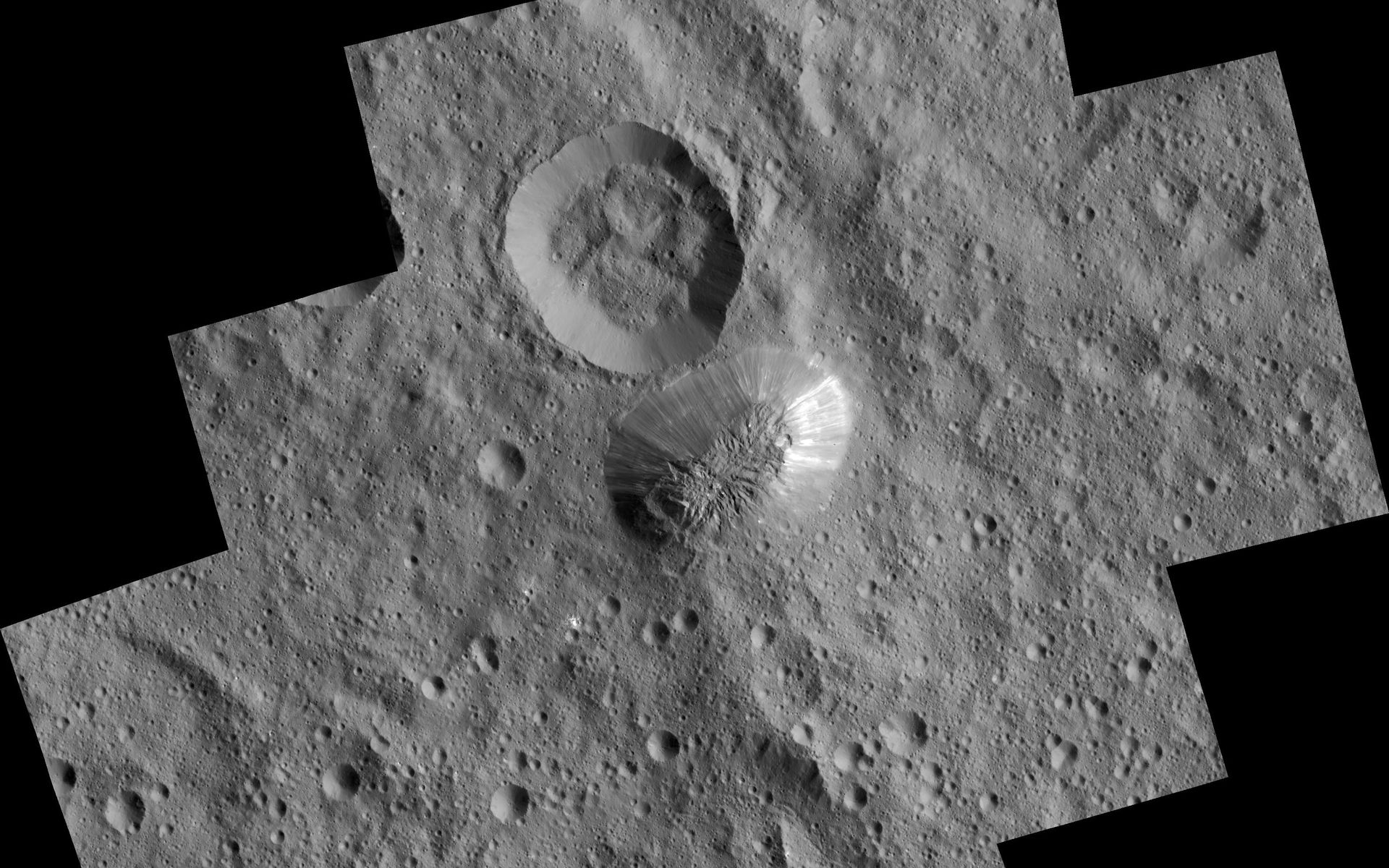
Credits: NASA/JPL/Dawn mission
Scientists from NASA and the Max Planck Institute have identified something that scientists think may be a so-called cryovolcano on the dwarf planet Ceres.
A cryovolcano (colloquially known as an ice volcano) is a volcano that erupts volatiles such as water, ammonia or methane, instead of molten rock.
Ceres is the largest asteroid in the belt between Jupiter and Mars and has been studied with the aid of the space probe Dawn since spring of 2015. Now, the probe took images of Ceres surface and discovered something that scientists interpret as a young volcano.
NASA compare the volcano named ‘Ahuna Mons’ with the “Lonely Mountain” Erebor in J.R.R. Tolkien’s mythology – Ahuna Mons on Ceres was once occupied by a dragon, but one that “breathed” ice, not fire.
“Ahuna Mons is evidence of an unusual type of volcanism, involving salty water and mud, at work on Ceres,” said Ottaviano Ruesch of NASA’s Goddard Space Flight Center, Greenbelt, Maryland, and the Universities Space Research Association. “Geologic activity was discussed and debated among scientists: now we finally have observations testifying to its occurrence.”
The team now plans to use the visible and infrared mapping spectrometer on Dawn to determine the surface composition of Ahuna Mons. The spectrometer detects the unique signatures found in light reflected from minerals to identify them.
Reference:
O. Ruesch et al, 2016. Cryovulcanism on Ceres. Science 2 september 2016. Vol 353, issue 6303.
NASA Discovers “Lonely Mountain” on Ceres Likely a Salty-Mud Cryovolcano











![OpenAI. (2025). ChatGPT [Large language model]. https://chatgpt.com](https://www.illustratedcuriosity.com/files/media/55136/b1b0b614-5b72-486c-901d-ff244549d67a-350x260.webp)
![OpenAI. (2025). ChatGPT [Large language model]. https://chatgpt.com](https://www.illustratedcuriosity.com/files/media/55124/79bc18fa-f616-4951-856f-cc724ad5d497-350x260.webp)
![OpenAI. (2025). ChatGPT [Large language model]. https://chatgpt.com](https://www.illustratedcuriosity.com/files/media/55099/2638a982-b4de-4913-8a1c-1479df352bf3-350x260.webp)








